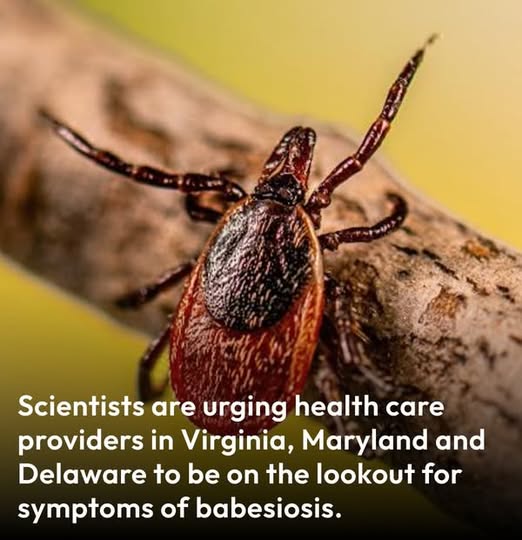A major new study spanning 2009–2024, published in the Journal of Medical Entomology, reveals that babesiosis is now emerging in the Mid‑Atlantic—including Maryland, Virginia, Delaware, West Virginia, and the District of Columbia. The researchers documented locally acquired (“autochthonous”) human cases in those jurisdictions, and molecular testing found B. microti in I. scapularis ticks collected across all those states scientificamerican.com+7eurekalert.org+7smnewsnet.com+7. Notably, the parasite was also detected in Ixodes keiransi ticks—marking the first identification of this vector in Virginia and Delaware vax-before-travel.com+5eurekalert.org+5entomologytoday.org+5.
Co‑infection adds complexity: around half of the B. microti‑positive ticks were also carrying Borrelia burgdorferi (Lyme disease), and even some triple infections—including Anaplasma phagocytophilum—were found health.com+14eurekalert.org+14bioengineer.org+14. Such overlap makes clinical diagnosis more challenging and stresses the importance of including babesiosis in the differential diagnosis of febrile illness in Mid‑Atlantic regions, especially during spring and summer facebook.com+10eurekalert.org+10entomologytoday.org+10.
What’s behind this shift? Climatic changes—milder, wetter winters and humid springs—along with ecological factors like forest regrowth, rising deer and rodent populations, and suburban expansion into wildlife habitats, are all likely contributing to tick proliferation and wider geographic spread . As experts warn, babesiosis is no longer confined to the Northeast and Midwest. Mid‑Atlantic healthcare providers and residents should be prepared: prevention (tick checks, repellents) and surveillance are key to detecting and managing this disease early.
First comment 👇:
🧵 Babesiosis in the Mid‑Atlantic is real. Study confirms local human cases and ticks carrying B. microti, even coinfections with Lyme. Tick‑bite prevention and enhanced testing in VA, MD, DE, WV, and DC are now essential.
Let me know if you’d like me to add the usckiamer tag or tweak any section!
Sources
